A 1954 nickel’s value depends on condition, mint mark, and errors. In circulated condition, it’s worth slightly above face value, while uncirculated examples range from $1-$10. The 1954-P (Philadelphia) and 1954-D (Denver) are common, worth $1-$5 uncirculated. The 1954-S (San Francisco) is more valuable ($2-$10) due to poor strike quality. The rare “S over D” mint error, where an “S” was stamped over a “D,” can exceed $1,000 in top grades. Coins with “Full Steps” showing clear details on Monticello’s base command premium prices. Other errors like off-center strikes and die cracks also increase value, with condition being the primary factor determining worth.
That worn nickel buried in your change jar from 1954 might be worth significantly more than five cents. While most 1954 Jefferson nickels remain common, specific mint marks, striking characteristics, and rare errors can transform these coins into collectibles worth hundreds or even thousands of dollars. Understanding what separates a pocket change nickel from a valuable specimen requires knowing exactly what to look for.
Understanding the 1954 Jefferson Nickel Production
The United States Mint produced Jefferson nickels at three facilities in 1954: Philadelphia (no mint mark), Denver (D mint mark), and San Francisco (S mint mark). Philadelphia struck 47,917,350 pieces, making it the second-highest mintage year. Denver produced 117,183,060 nickels, the highest production that year. San Francisco struck just 29,384,000 pieces, the lowest mintage of the three facilities.
These production numbers directly impact availability today. Denver nickels appear most frequently in circulation due to their massive mintage. Philadelphia coins, despite their lower production compared to Denver, remain readily available. San Francisco examples present the greatest challenge for collectors, not just because of lower mintage but due to persistent striking problems that plagued the facility that year.
The composition remained standard for wartime nickel production: 75% copper and 25% nickel, weighing 5 grams with a diameter of 21.2 millimeters. Felix Schlag’s design featured Thomas Jefferson on the obverse and his Monticello estate on the reverse, continuing unchanged since 1938.
What Each Mint Mark Means for Your Coin’s Value
Philadelphia (No Mint Mark): Standard 1954 nickels from Philadelphia trade between 10 cents and 50 cents in circulated condition. Uncirculated examples in MS60 grade typically sell for $1.50 to $3. Higher-grade specimens command premium prices: MS64 examples reach $8 to $15, while MS65 coins sell for $20 to $35. Exceptional MS66 specimens have sold at auction for $85 to $150.
Denver (D Mint Mark): Denver nickels show similar values in lower grades. Circulated pieces trade for 10 cents to 60 cents depending on wear. MS60 to MS63 uncirculated coins sell for $2 to $6. The Denver facility produced sharper strikes on average, making MS65 examples more common and affordable at $25 to $45. MS66 specimens reach $100 to $200, while the finest MS67 examples have sold for $500 to $800 at Heritage Auctions.
San Francisco (S Mint Mark): This is where values diverge significantly. San Francisco struggled with die quality and striking pressure in 1954, resulting in weak, mushy details on most coins. Circulated pieces trade for 25 cents to $1. Finding sharp, uncirculated examples proved challenging even when new. MS60 to MS63 coins sell for $3 to $10, but MS64 examples jump to $15 to $30 due to scarcity. MS65 specimens command $40 to $80, and MS66 coins reach $150 to $300. The finest MS67 examples have sold for $1,200 to $2,500 at major auctions.
| Grade | Philadelphia | Denver | San Francisco |
|---|---|---|---|
| G-4 to F-12 | $0.10-$0.25 | $0.10-$0.30 | $0.25-$0.50 |
| AU-50 | $0.50-$1 | $0.60-$1.25 | $1-$2 |
| MS-60 | $1.50-$3 | $2-$4 | $3-$6 |
| MS-63 | $4-$8 | $4-$8 | $8-$15 |
| MS-65 | $20-$35 | $25-$45 | $40-$80 |
| MS-66 | $85-$150 | $100-$200 | $150-$300 |
| MS-67 | $400-$750 | $500-$800 | $1,200-$2,500 |
The Valuable S Over D Mint Mark Error
The most significant 1954 nickel error involves a repunched mint mark at the San Francisco facility. During production, a die was initially punched with a D mint mark, likely intended for Denver. Before use, the mint mark was corrected by overpunching with an S. This created the distinctive S over D variety, where both letters remain visible under magnification.
Identifying this error requires examining the mint mark location on the reverse, to the right of Monticello. Under 5x to 10x magnification, you can see the outline of the D beneath and slightly offset from the S. The D typically shows most clearly at the lower left portion of the S mint mark.
Values for this error escalate dramatically with grade. Examples in AU-50 condition sell for $30 to $60. MS-60 specimens reach $75 to $125. MS-63 examples trade for $150 to $250. The real value jump occurs at MS-65, where coins sell for $400 to $700. MS-66 examples have sold at Stack’s Bowers for $1,200 to $1,800. The finest MS-67 specimen sold at Heritage Auctions in 2023 for $3,360, demonstrating the premium collectors pay for this variety in top condition.
Authentication remains critical, as the error can be counterfeited. Third-party grading services like PCGS and NGC verify genuine examples and provide grade certification. Certified examples command higher prices than raw coins due to buyer confidence.
The Premium Full Steps Designation
Jefferson nickels receive special designation when the steps of Monticello on the reverse show complete, unbroken detail. Standard strikes typically show weak or merged steps due to insufficient striking pressure or worn dies. Full Steps (FS) specimens display five or six distinct, separate steps at the base of Monticello.
San Francisco nickels from 1954 rarely exhibit Full Steps due to the facility’s striking problems. Experts estimate fewer than 1% of 1954-S nickels qualify for this designation. This scarcity creates substantial premiums over non-Full Steps coins of the same grade.
A 1954-S nickel in MS-65 without Full Steps sells for $40 to $80. The same coin with Full Steps designation (MS-65 FS) sells for $300 to $600. MS-66 FS examples reach $800 to $1,500. The finest MS-67 FS specimen sold at auction for $4,800, more than triple the value of a non-Full Steps MS-67.
Denver and Philadelphia nickels show Full Steps more frequently but still command premiums. A 1954-D in MS-65 FS sells for $100 to $200 compared to $25 to $45 without the designation. Philadelphia examples in MS-65 FS reach $80 to $150 versus $20 to $35 for standard strikes.
Examining for Full Steps requires good lighting and magnification. Look at the base of Monticello’s portico on the reverse. Count the horizontal lines representing steps. Full Steps examples show at least five complete, unbroken lines with clear separation between each step. Any merging, weakness, or incompleteness disqualifies the coin from the designation.
Additional Errors Worth Finding
Off-Center Strikes: Dies occasionally misalign during striking, creating coins with designs shifted from center. Minor shifts of 1% to 5% add modest value of $5 to $15 in uncirculated condition. Dramatic off-center errors showing 10% to 25% misalignment sell for $50 to $150. Extreme examples showing 40% or more off-center with full date visible have sold for $200 to $400 at auctions.
Doubled Die Varieties: Die doubling creates visible duplication of design elements. The 1954 Philadelphia nickel shows minor doubled die varieties on the reverse, visible on the word MONTICELLO. These typically add $10 to $30 to uncirculated specimens. Stronger doubled dies affecting Jefferson’s eye or date are rarer and can reach $75 to $150 in MS-63 or better.
Lamination Errors: The nickel planchet occasionally develops internal separations that peel away during or after striking. Small lamination flakes add $3 to $10 to circulated coins. Large, dramatic laminations covering significant portions of the design sell for $25 to $75. Complete missing laminations showing copper core underneath have reached $100 to $200 for visually striking examples.
Die Cracks and Cuds: As dies age, they develop cracks that appear as raised lines on struck coins. Minor die cracks add minimal value unless they create interesting patterns. Die cuds, where a piece of the die breaks away creating a blank raised area on the coin, generate more interest. Small cuds add $10 to $30, while large, dramatic cuds covering significant design elements sell for $50 to $150.
Broad Strikes: Coins struck without a collar result in broader diameter than normal. These planchet errors create nickels measuring 22 to 23 millimeters instead of the standard 21.2 millimeters. Values range from $40 to $100 in uncirculated condition depending on how dramatic the broadness appears.
Where to Sell Your Valuable 1954 Nickel
Once you’ve identified a valuable variety or high-grade example, choosing the right selling venue maximizes your return. Local coin shops offer immediate payment but typically pay wholesale prices, generally 60% to 80% of retail value. This works well for coins worth under $100 where convenience outweighs maximizing price.
Online marketplaces like eBay reach broad audiences. Certified coins in PCGS or NGC holders sell more reliably, often achieving 85% to 95% of retail guide prices. Selling raw coins requires building buyer trust through detailed photos and honest descriptions. Factor in selling fees of approximately 13% to 15% when calculating net proceeds.
Major auction houses like Heritage, Stack’s Bowers, and Great Collections specialize in rare coins. They reach serious collectors willing to pay premium prices for exceptional specimens. Consignment typically makes sense for coins worth $500 or more. Auction houses charge seller fees of 10% to 20% but often achieve prices exceeding retail guides for rare varieties in top grades.
Coin shows provide opportunities to sell directly to dealers or other collectors. Multiple dealers competing for your coin can drive better prices than selling to a single shop. Shows work well for mid-range material worth $100 to $500 where auction fees eat significantly into proceeds but local dealers won’t pay full value.
Before selling significant pieces, consider professional grading. A raw 1954-S nickel that appears MS-65 FS might sell for $200 to $300. The same coin certified by PCGS or NGC as MS-65 FS typically sells for $400 to $600. The $40 to $50 grading cost proves worthwhile for coins with potential values exceeding $300.
Start Checking Your Nickels Today
Every coin collection should include a systematic review of Jefferson nickels from the 1950s. Start by sorting your nickels by date and mint mark. Examine each 1954 example under magnification for the S over D variety, Full Steps designation, and other errors. Even common Philadelphia and Denver nickels in exceptional condition deserve closer inspection and possible professional grading. The difference between a five-cent spender and a $1,000 collectible often comes down to knowing exactly what makes certain 1954 nickels special.
You may be interested:
- 1859 Indian Head Penny Coin Value Complete Errors List And No Mint Mark Worth Guide For Collectors
- 1911 V Nickel Coin Value Guide Complete Errors List And No Mint Mark Worth Today
- 1902 Dime Coin Value Complete Errors List With O S And No Mint Mark Worth Guide
- 1788 Quarter Coin Value Complete Guide Errors List And D S P Mint Mark Worth Revealed
- 1776 To 1976 Bicentennial Half Dollar Coin Value Complete Errors List And What Your D S And No Mint Mark Coins Are Actually Worth
- 1990 Penny Coin Value Errors List How D S And No Mint Mark Pennies Are Worth Thousands Of Dollars

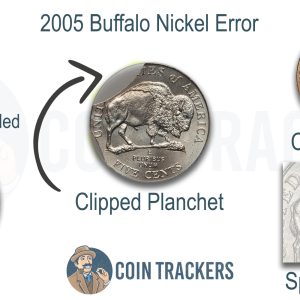
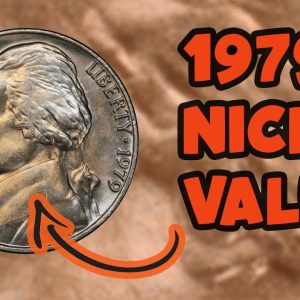
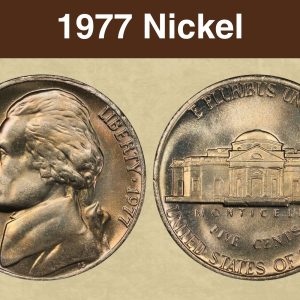
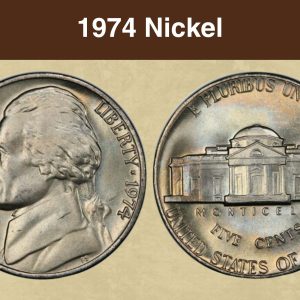
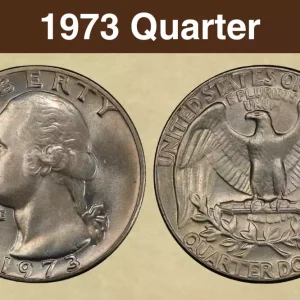
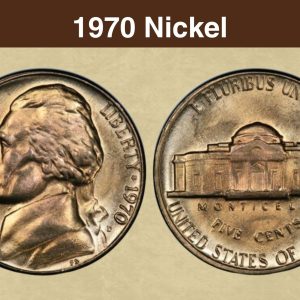
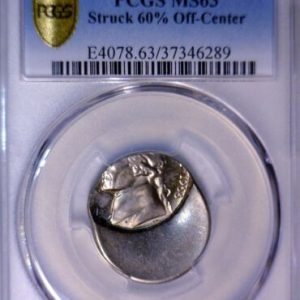
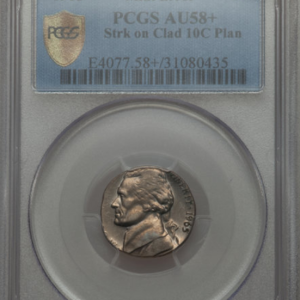
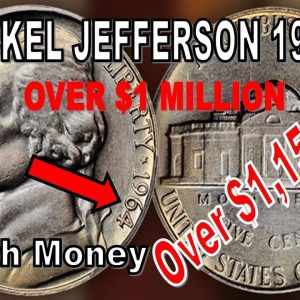
How much is a 1954 nickel with no mint mark worth?
Circulated condition: Typically worth its face value of 5 cents. Uncirculated condition: Can range from approximately $1 to $5, but a professional grading service might assess a higher value. High-grade uncirculated: Coins in Mint State, especially those with a “Full Step” designation, can be worth significantly more, potentially reaching several thousand dollars. Philadelphia mint: The 1954 nickel without a mint mark was produced at the Philadelphia Mint, with a mintage of over 47 million.
What nickel is worth $10,000 no mint mark?
In 1942 at Philadelphia. They made no mintmark nickels but they were not 35% silver they had no silver in them they were the regular copper nickel composition.
Where is the mint mark on a 1954 Jefferson Nickel?
On a 1954 nickel, look to the right of Monticello on the reverse (tails) side of the coin, near the rim. Coins minted in Philadelphia before 1980 typically do not have a mint mark, but coins from Denver will have a “D,” and coins from San Francisco will have an “S”.
What nickel error to look for?
Series is these co are these coins. You’ll see you’ll see clear doubling on Montichello. And the words 5 cents. It’s a textbook error that’s still out there.